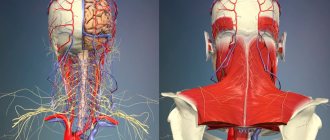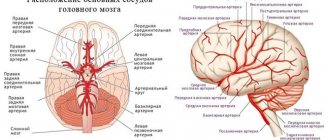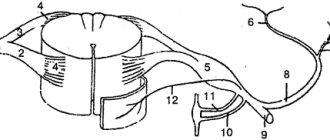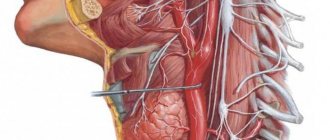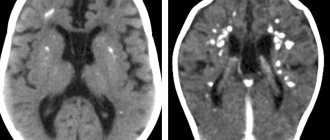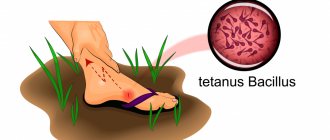Who can get rabies?
Rabies affects almost all species of terrestrial mammals, primarily carnivores (families canines, felines, mustelids, raccoons, etc.). Wild and domestic birds, rodents, and bats can also get sick. Every year in our country hundreds of cases of the disease are recorded among wild (foxes, raccoon dogs, wolves, etc.) and domestic (dogs, cats, cattle, horses) animals. There have been isolated cases of hydrophobia with fatal outcomes among people. The source of rabies is a wild animal that became infected in the natural environment, as well as a domestic animal that was attacked by another sick animal (wild or domestic). Humans become infected from sick animals.
The rabies virus as it is
The rabies virus (in Latin Rabies virus) is very insidious and easily passes into the human body from the saliva of affected animals - for this it only needs damage to the skin, inevitably received by a person through a bite or for some reason previously.
The virus multiplies in nervous tissue and migrates along nerve pathways from the site of infection to the brain at a speed of about 3 mm per hour. Therefore, particularly dangerous places for bites are the hands and head, from where the virus can very quickly penetrate the brain. Having reached the spinal cord and brain, it causes severe inflammation with the death of tissue areas.
Photo of rabies virus
How does infection occur?
The causative agent of rabies is a specific virus contained in the saliva of a sick animal. Human infection occurs through a bite and penetration of saliva from a sick animal into the wound. Having penetrated through damaged skin, the rabies virus spreads along the nerve trunks to the brain and spinal cord. This is where the virus multiplies and accumulates mainly. Then it penetrates the salivary glands and is released with saliva into the external environment. The virus appears in saliva 1-7 days before the first clinical signs of the disease. Therefore, you can become infected with rabies through a bite inflicted by an apparently healthy animal.
Infection can also occur if saliva gets on the mucous membranes of the eyes, nose, mouth, or damaged skin.
Scratches caused by claws are very dangerous: animals often lick their paws, so a sufficient amount of virus remains on the claws for infection.
You can also become infected when cutting up the carcass of a sick animal, as this often results in cuts to the fingers.
Unusual routes of infection should be mentioned. In recent years, the literature has described isolated cases of human infection through intact skin, by airborne droplets (in laboratory conditions, in a cave with millions of bats), through the placenta during pregnancy, and during organ and tissue transplantation. Cases of infection through the digestive tract have been described, so far only for animals. As for humans, to date there is not a single case of human illness known after consuming meat or milk of sick animals. This is due to the fact that the rabies virus rarely penetrates the blood and glandular organs. In addition, the virus is unstable in the external environment; it dies under normal pasteurization regimes, and when boiled, it dies instantly.
The most dangerous bites are those caused by rabid wolves, foxes, raccoon dogs and other wild carnivores and bats. Dog and cat bites are somewhat less dangerous. Cases of human infection after contact with a sick farm animal (cow, horse, goat, sheep, pig) are rare. Poultry, although they can get rabies, are not capable of infecting humans due to the lack of salivary glands. Unlike domestic birds, birds of prey (for example, falcons) can infect humans. However, these birds are very rare in the natural environment and the likelihood of their contact with humans is negligible. The possibility of infection of a person as a result of a bite inflicted by a rodent: rabbit, hare, squirrel, muskrat, rat, hamster, mouse cannot be ruled out. However, no reliable cases of human infection from these animals have been described in the world literature.
— What is more dangerous: a bite or a scratch, and why?
— Both a bite, a scratch and saliva are dangerous. Remember that the rabies virus enters the body not only from a wound, but also from intact mucous membranes, but the deeper, larger and more numerous the bite wound, the more dangerous it is!
Immediate combination vaccination against rabies is required, which involves the administration of rabies immunoglobulin in addition to the rabies vaccine.
A dog bite, regardless of the size of the wound, except for vital indications, cannot be sutured for 3 days. This is because suturing the wound creates favorable conditions for the rabies virus to enter the nerve endings. After 3 days, the anatomical integrity of the wound can be restored.
What damage is considered the most dangerous?
The period from the bite to the onset of the disease (latent or incubation period) averages 30-50 days in humans, although it can last 10-90 days, in rare cases - more than 1 year. Moreover, the further the bite site is from the head, the longer the incubation period. Consequently, taking into account the localization (location) of the damage, bites to the head, face, and neck are especially dangerous. The category of severe (dangerous) injuries also includes bites on the fingers, because these parts of the body have many nerve endings. Bites to the forearm, shoulder, and torso are considered less dangerous. The incubation period lasts the longest for a bite on the legs.
Symptoms in cats
Cats suffer from a violent form of rabies. A day before the appearance of a clear clinical picture, pets change in character, becoming either too sociable or too withdrawn. This period is dangerous because the cat’s saliva already contains the virus, but the symptoms are not obvious.
Then comes the stage of excitement. At the same time, they behave extremely aggressively, attacking humans (and even the owner), dogs, and any other animals. They frantically tear up chairs, sofas, carpets, ground and floors, and gnaw on all objects in sight, including inedible ones. A particular danger to humans is that cats often attack silently, so there is no way to prepare and fight back.
The last stage of the disease is paralysis and death. First, there is an alternation of excitement and depression, gradually the periods of depression stretch out and become more frequent. At the same time, paralysis spreads to the entire body, first it affects the lower jaw and larynx (the cat cannot swallow), then the animal’s legs fail. Death occurs due to paralysis of the respiratory center or heart.
What should you do if you are bitten by an animal?
The duration of the incubation period (i.e., the period before the onset of symptoms of the disease) in animals ranges from a week to several months (sometimes years), but already 5-10 days before the onset of the disease, the animal is contagious.
A characteristic sign of an animal disease in the first stage should be considered a change in behavior: an angry animal becomes affectionate, unreasonably animated, tries to lick the owner’s face; good - angry, irritable, does not respond to the owner’s call, hides in dark corners. The animal refuses its favorite food, but swallows inedible objects (wood, stones, etc.), and sometimes there is increased sensitivity to light and noise. Body temperature rises slightly. If we talk about wild animals, then for those who are sick, such a change will be the desire to make contact with a person: a healthy wild animal will never voluntarily go to a person and will run away whenever they try to get closer.
The initial stage of the disease is replaced by the second stage - the stage of excitation, in which the animal’s irritability increases and aggressiveness occurs. An animal can attack or bite for no apparent reason. Next comes the third, paralytic stage, very characteristic of the appearance of the animal: the fur is tousled, the lower jaw droops, the tongue falls out, saliva flows from the mouth. On the 8-10th day the animal dies.
Rabies in a dog.
In the initial period, the dog becomes depressed, responds reluctantly to calls, and lies down more. The appetite is sluggish, indifferent to water (but, as a rule, there is no hydrophobia). It must be emphasized that hydrophobia (fear of water) is not a characteristic sign of rabies in dogs. This is very important, since some people, seeing that a dog is not afraid of water (drinks water, swims across a river, etc.) consider it healthy and, if bitten, scratched or salivated by such a dog, do not take protective measures or seek medical help . By the end of the 2nd day of illness, anxiety and irritability often appear; the sick dog tries to go to some distant corner (under the porch, bed, etc.). Signs of clouding of consciousness occur, she barks for no reason, her voice becomes hoarse, dull, gasps for air and makes other involuntary movements, which never happens normally. Sometimes, as a result of itching at the site where she was bitten by a rabid animal, she chews on the healed wound. It is typical for the dog to swallow inedible objects: chips, stones, etc.
As a result of growing excitement, the dog runs away from home, running up to 50 km a day. Along the way, she silently attacks people and animals.
The period of excitement lasts 3-4 days, after which attacks of convulsions and paralysis occur. Dogs die on days 6-8 of illness. It should be remembered that the described picture of rabies in dogs is not always observed. But in any case, the animal’s normal behavior changes dramatically, which should alarm the owners and be the reason for inviting a veterinarian. Attempts to treat a dog that allegedly choked on a bone often resulted in rabies.
Rabies in a cat.
Rabies is more severe in cats than in dogs. The first signs of the disease come suddenly and are expressed by increasing anxiety and agitation. The meowing becomes hoarse, dull, the look (very characteristic!) is frightened, cautious. The cat refuses food and avoids its owners. The next day the cat becomes aggressive, with particular anger it attacks dogs and humans.
Excitation lasts 1-2 days, and then paralysis develops. Death occurs within 2-5 days. A characteristic feature of bites from a sick cat is a spasm of the masticatory muscles, as a result of which, after a bite, such a cat can be extremely difficult to tear away from the wound.
It should be emphasized that in case of any illness in the animal, and especially when symptoms of rabies appear, you should immediately contact the nearest veterinary station. Under no circumstances should you self-medicate an animal - this is deadly!
Signs of rabies after a cat bite
After a person is bitten or scratched by a cat, they may develop rabies.
Of course, only if the cat itself was sick. Symptoms will not appear immediately: the incubation period in exceptional cases can reach a year. But more often we are talking about a period from 1 week to 3 months after contact. Rabies can manifest itself in different forms. Violent, with which everyone associates this disease, is only one of three scenarios. The most common symptoms of rabies in humans with this form are:
- itching and pain at the site of the bite, which can appear even on an almost healed wound;
- fever;
- headache;
- general malaise;
- disorders of appetite and digestion;
- depression and anxiety;
- increased sensitivity to noise and bright light;
- hydrophobia (a person cannot swallow or swallows with difficulty, and sometimes even at the mention of water his throat begins to spasm and he is overcome with horror);
- attacks of agitation and aggression;
- hallucinations;
- convulsions;
- excessive salivation.
Once even the very first symptoms of rabies appear, it is no longer possible to help a person. He is placed in a hospital, where he spends his last days. Ultimately, the rabies virus makes the human brain unable to perform its basic functions, causing the person to die. As a rule, death occurs as a result of stopping the respiratory center or heart.
The set of symptoms depends on the form of the disease. Rabies, as we have already said, has 3 forms: violent, paralytic and atypical. Violent is usually diagnosed without problems. Symptoms of the disease in its violent form look something like this
Attention! Don't watch for the impressionable
But the paralytic form, which is observed in almost 30% of cases, often remains undiagnosed, not to mention atypical. The fact is that there are no tests to diagnose rabies in humans if symptoms have not yet appeared. Diagnosis is based on symptoms and subsequent testing, but when symptoms are mild or atypical, doctors will not suspect rabies and will not test. In this regard, the following case is indicative.
The reason for this situation is the lack of awareness among doctors about this disease and lack of alertness, because In Europe, this disease practically does not occur. In the CIS countries, where the rabies situation is unfavorable, things are better with diagnostics.
What should you do if you are bitten by an animal?
If a child or adult is bitten, scratched, slobbered by any animal, even an apparently healthy one, much less a neglected or wild one, or if there is a suspicion that it has rabies, you should immediately:
- Wash the wound intensively for 10-15 minutes with soap and water, which will wash away the animal’s saliva. It is recommended to wash deep wounds with a stream of soapy water, for example, using a syringe. There is no need to cauterize wounds.
- Apply a sterile bandage to the wound.
You should be warned about the danger of sucking the wound with your mouth.
After this, you must contact the nearest trauma center or any medical institution (clinic, hospital, medical center) as soon as possible. If possible, it is necessary to collect as much data as possible about the bitten animal (description of the animal, its appearance and behavior, presence of a collar, circumstances of the bite, etc.). If the animal is domestic (dog or cat) and has been vaccinated against rabies, then you must take with you a veterinary certificate confirming the vaccination or a registration certificate with a mark on the vaccination.
How long does it take for scratches to heal without treatment?
Any game or proud disposition of domestic cats ends for their owners with scratched arms, legs, and sometimes even the face. And everyone has noticed that scratches take a long time to heal, spoil the appearance and irritate the skin.
Reasons for long skin recovery after a scratch:
- a cat's claw penetrates deeply into a person, the wound is closed and torn;
- dirt and bacteria that lived on the animal’s claws accumulate in the wound;
- the healing process increases, since it is necessary not only to grow new tissue, but also to get rid of pathogens.
With good immunity and not a deep wound, the scratch will heal in 3-7 days. Neglecting wound treatment can cause complications, provoke an inflammatory process, the introduction of other infections into the wound, and its suppuration. In this case, the healing process will increase and this period will depend on the degree of complication and its consequences.
What do you do with an animal that has bitten you?
It is very important to indicate that simultaneously with contacting a doctor about a bite, it is necessary to take measures regarding the bitten animal (it must be tied up, isolated) and call a veterinarian for consultation. Appearingly healthy pets (dogs or cats) are subject to veterinary supervision for 10 days from the date of the bite.
A sick animal must be euthanized. It is impossible to save him. As the disease progresses, the behavior of such an animal is uncontrollable. It is important to prevent human infection.
Distribution and pathogenesis
The pathogen is transmitted through bites, after which the first sign may be itching in the bite area. The virus multiplies on the cells of the nervous tissue, and it is transmitted through them, gradually rising to the central nervous system (the spine and then the brain). In addition, the pathogen can be spread through the blood or lymph flow, but this is only an additional method.
When a cell is infected, the virus releases neurotoxins, which cause the symptoms characteristic of rabies. The pathogen affects all nerves, not just the central nervous system; in particular, it affects the nerve ganglia of the salivary glands, which causes severe salivation. At the same time, it penetrates the salivary glands themselves.
The incubation period in cats lasts from 3 days to 3 weeks, and in humans from 10 days to 2 months. The virus is detected in saliva 8-10 days before the first symptoms appear. At the same time, there are cases when the incubation period was reduced to one day for a cat and up to 5 days for a person, or, conversely, extended by several years.
What measures do you know to prevent rabies in animals?
Should a person, caring for the safety of his life, refuse to communicate with animals? Not a single mechanical toy can replace human communication with a living creature of another species. They give us their love and affection, heal us, make us kinder and more humane. We must always remember that animals need care and supervision; they, like people, are susceptible to many diseases.
In order to prevent rabies in domestic animals, the Rules for keeping them should be followed:
- within three days, register the purchased animal and report it to the veterinary station;
- It is mandatory to vaccinate your pet (over 3 months old) against rabies every year; it is better to do this in the winter and spring, especially before going outdoors;
- walk animals in specially equipped areas or vacant lots, take dogs outside on leashes and muzzles (this will protect the animal from possible contact with sick wild or stray animals and eliminate the possibility of your animal biting anyone);
- You cannot bring dogs and cats to shops, catering and consumer services establishments, schools and preschool institutions, public buildings, parks, squares, stadiums, markets;
- minors are prohibited from walking dogs of potentially dangerous breeds;
- Under no circumstances should you leave or abandon your animals unattended on the streets, squares, markets, entrances and other places, including in the country.
The best way to prevent rabies in wild animals is to vaccinate them by placing baits containing the vaccine near their natural habitats.
Prevention
Prevention (specific and nonspecific) in this case occupies a special place. A person who has been attacked must be vaccinated. In addition, everyone whose profession is related to animals (veterinarians, hunters) is vaccinated. Nonspecific prevention consists of thoroughly treating the wound surface with a 20% solution of medical soap.
During the consultation, the doctor will answer questions and tell you what can be done if you become infected with rabies. Appointments can be made online and at the above numbers.
Related services: Ambulance call 5288
What preventive measures are there if you are bitten by an animal?
All kinds of recommendations for the prevention and treatment of rabies - the destruction of enraged animals, cauterization of bitten areas in people with a hot iron - did not produce any effect. Almost every person bitten by a rabid animal was doomed to death. Until the 80s of the 19th century, people did not have a reliable means of protection against this terrible disease.
The great French scientist Louis Pasteur has the honor of creating a vaccine against rabies, which was successfully used for the first time on July 6, 1885. Then, thanks to vaccination, a boy bitten by a rabid dog was saved. And some time later, in a French village, children playing were attacked by a rabid dog. Defending them, fifteen-year-old shepherd Jean Jupille accomplished a real feat. He managed to tie the dog's face with a belt whip and kill it with his wooden shoe. But the boy's entire body was covered with wounds. Barely alive, Jean was brought to Paris. Pasteur saved the hero.
To this day, vaccinations remain the only reliable means of protecting people after being bitten by an animal sick or suspected of having rabies. These include the administration of a vaccine and, if necessary, immunoglobulin.
What you need to know about preventive vaccinations:
- if the doctor has prescribed vaccinations, they should be started immediately;
- Under no circumstances should you skip the next vaccination;
- the course of vaccinations prescribed by the doctor must be completed in full;
- a person who is vaccinated is not dangerous to anyone;
- During vaccinations, you should not drink alcoholic beverages for 6 months after their completion; you should avoid overwork, hypothermia, and overheating.
Along with vaccinations, on the recommendation of Belarusian scientists, antibiotic prophylaxis is also carried out.
Modern methods of treatment
Once obvious symptoms appear, effective treatment of rabies becomes impossible; medical efforts are aimed only at reducing the patient’s suffering. He is prescribed anticonvulsants and sleeping pills, placed in a darkened room with good sound insulation, and given painkillers and tranquilizers. Currently, scientists are testing new techniques based on the use of specific immunoglobulins, intensive therapy, and cerebral hypothermia. However, at the current level of development of medicine, after the appearance of clinical symptoms, death occurs in all cases.
In these conditions, the prevention of rabies is of vital importance, which consists not only of vaccinating healthy people, but also of mandatory implementation of a set of measures for animal bites:
- deep and thorough washing of wounds with medical alcohol;
- treating wounds with antiseptic drugs;
- conducting a course of rabies vaccination using dry rabies vaccine and rabies immunoglobulin.
The schedule for administering the vaccine and immunoglobulin in each case is determined individually, depending on the location of the bites, the severity of the wounds and the degree of salivation. When all of the above measures are taken, the likelihood of disease can be reduced to almost zero.
How to avoid being bitten or salivated by unknown animals?
Children are more likely to suffer from animal bites, so it is necessary to constantly educate them and try to avoid unnecessary contact with animals, especially wild and/or stray ones:
- You should not play with unfamiliar dogs, cats and other animals; it is better to stay at a safe distance from them;
- should not be picked up at the dacha, in the forest, etc. wild animals. Hedgehogs and small rodents can also carry rabies. Incorrect or inappropriate behavior of a child who, due to his age, will not be able to correctly assess the situation, can lead to aggression in any animal, especially a sick animal;
- It is better not to pick up homeless stray or sick animals, but if you do, then find an opportunity to quickly vaccinate the animal and show it to a veterinarian;
- You should not take an animal “for the summer holiday season”: by throwing it away, you increase the risk of rabies in the given region. It is better not to send children under 12-14 years of age to walk a dog on their own, especially if it is a large and/or aggressive breed of animal. The child may not be able to cope with it, and in the event of a non-standard situation, he may not be able to adequately explain the essence of what happened.
Routes of human infection
A person's chances of contracting rabies from a cat are not very high, but they are quite real even in modern urban conditions. For example, this is quite possible when trying to pet a stray animal. A sick cat will probably respond with aggression: it will bite or scratch.
The probability of getting the rabies virus even from a domestic cat is by no means zero. A free-ranging pet runs the risk of becoming infected if it fights and mates with a stray animal.
Bite
The highest risk of infection occurs when bitten by a cat that already has rabies. During active games or resistance to unpleasant procedures (for example, when bathing), it can bite the owner until blood is drawn. This will allow rabies-contaminated saliva to enter the wound. And if you allow your cat to lick the bite site, infection will be more likely.
Scratch
It is unlikely that you can become infected with rabies from a cat through scratches. The pathogen requires special conditions to exist, and in the air it loses its activity. The virus can only be transmitted through the saliva of an infected animal.
For infection to occur through a scratch, the following circumstances must be present:
- before scratching a person, the cat licked the affected paw, and undried saliva remained on the claws;
- if you let your cat lick a bleeding scratch;
- if, when caring for an animal infected with rabies, the owner has open abrasions and scratches on his hands.
Infection will only occur when the saliva of a sick cat comes into contact with human blood.
Other routes of infection
If cat owners and their household members have a habit of feeding their pets from their own plates and spoons, the risk of getting into serious trouble is quite real. The rabies virus does not immediately die in the aggressive environment of the human stomach. There is a possibility of the pathogen entering the bloodstream. This possibility is small, but it exists.
Another way the virus enters humans is through mucous membranes:
- if you kiss a cat on the nose;
- if a cat licks the owner’s face, the hard papillae of the cat’s tongue are quite capable of causing microtrauma to the delicate skin of a person’s eyelids or lips;
- When a cat sneezes or coughs, particles of rabies-contaminated saliva can enter the respiratory tract and the eyes of others.
These methods of infection are rather hypothetical, but they should not be excluded.
Light form
Domestic cats rarely get rabies unless they go outside and have contact with other animals. But if the animal is not regularly vaccinated, there is no guarantee that it will not become infected.
In a mild form, you can observe the manifestation of unreasonable aggression: the cat constantly tries to bite, becomes nervous and excited. Her salivation increases, her lower jaw droops unnaturally, and blood appears in her stool.
The behavior of an animal can also be diametrically opposite: even the most reserved or wild cat can become very affectionate, ask to be held, and obsessively demand to be stroked.
The paralytic form develops rapidly, the pharynx is the first to suffer. The animal begins to produce excessive amounts of saliva, coughs, and appears to be choking on something.
While the incubation period lasts, there are no obvious symptoms. Many owners try to more carefully examine the oral cavity to understand the cause of spasms in the throat, and thereby expose themselves to great danger.
But even after identifying rabies based on these signs, the pet cannot be helped. At the paralysis stage, cats live for 2-4 days, then inevitably die.
Historia morbi: what everyone should know
The disease, which in most cases ends in death, occurs in all warm-blooded animals. It is easily transmitted to a person who has been in contact with an animal whose saliva contains a dangerous virus. The causative agent is Rabies lyssavirus, which quickly attacks the peripheral nervous system of the infected creature. It can die only when heated to 100 degrees. With the opposite effect – freezing – its activity remains for up to 2 years.
Do cats get rabies and do they have this dangerous disease that manifests itself in the form of encephalitis? Alas, pets are not immune from infection - especially if they have recently come into contact with carriers of the infection: foxes, rats and other rodents, raccoons, wolves, already infected stray cats - and have been bitten by them.
Interesting fact
The dangerous rhabdovirus has seven genotypes. Most animals infected with it will die within a few weeks of Rabies lyssavirus entering the bloodstream through saliva. In some mammals (for example, one species of mongoose), the virus “dormants” for several years, which allows them to infect their fellows and people for a long time.
Violent form
Rabies in cats can also occur in a violent (acute) form. This is considered a classic scenario for the development of the disease. This form is divided into three main stages:
- prodromal;
- manic;
- depressed.
At the first stage, the cat tries to be as close to the person as possible: it constantly demands affection, sleeps on the owner’s body, and rubs against the legs. The animal's appetite decreases, drowsiness increases, and photophobia occurs.
Characteristic symptoms are diarrhea, vomiting, and increased salivation. The cat tries to swallow inedible objects and licks itself too often and thoroughly, especially at the bite site. The prodromal stage lasts on average 2-4 days.
During the manic stage, rabid cats become aggressive and may bite and scratch violently for no apparent reason. Some hide in dark, secluded places, avoiding all kinds of contact with other animals and humans. To the fear of light is added fear of hydrophobia.
The stage is accompanied by a complete refusal to eat, disheveled hair on the chin, sagging of the lower jaw, paralysis of the larynx, hind and fore limbs. The arousal stage lasts 3-6 days.
The disease then progresses into the depressive stage, when the exhausted and exhausted animal lies quietly, not even trying to get up. Strabismus and clouding of the cornea appear, and the tongue falls out of the mouth.
The cat becomes increasingly lethargic and does not respond to its name or other sounds. The animal slowly dies, fading away before the owner's eyes. Tremor is present until death; in the final stages, the cat may wheeze quietly with every breath.
